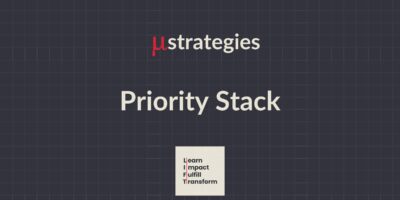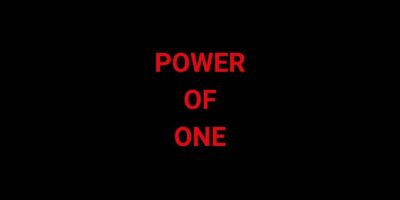Have you ever noticed how the quietest moments tend to be the most profound? In a world filled with constant noise and rapid decision-making, we often overlook the value of stillness. We’re conditioned to equate movement with progress, but what if slowing down—or even stopping—is the key to speeding up our path to success?
Do you ever catch yourself racing through emails during dinner? Or checking your phone first thing in the morning as if it’s a reflex? I didn’t always understand the power of silence either. Like many of us, I was trapped in the hustle—a life filled with back-to-back meetings, endless emails, and a constant buzz of notifications.
My kids joked that I wasn’t a dad but a “human blur.” Even our family dog started giving me the side-eye during his walks, thinking, “Does this guy even remember why we’re here?”
Everything had to be fast—fast decisions, fast results, fast everything. I had to be always on. At one point, I realized I was trying to “speed-listen” to a podcast and reply to emails while grocery shopping.
After some next-level patience, my wife called me out: “Are you sprinting through life or living it?”
And then one day, life forced me to pause.
Tai Chi vs. the Sprint (and My Golf Swing)
Let’s imagine two athletes side by side. One is a sprinter, every muscle tense, exploding out of the blocks and reaching full speed in seconds. The other is practicing Tai Chi—moving slowly, deliberately, seemingly in no rush. Now ask yourself: Who’s burning more energy? And more importantly, who will still be calm and composed when the race is long over?
Life often feels like we’re all expected to be sprinters. We rush from task to task, thinking speed equals success. But if you’ve ever watched Tai Chi, you know it’s not about rushing—it’s about balance and intention. Those slow, steady movements build strength and clarity. The same applies to life.
How often do we rush through decisions, only to realize later we missed something important? It reminds me of my golf swing. On good days, it’s smooth; on bad days, it looks like I’m trying to swat a mosquito off the ball. The irony? When I slow down my backswing, the ball miraculously finds the fairway. But when I rush, well… let’s just say I’ve become well-acquainted with the trees.
Adam Grant once said, “Procrastination gives you time to consider divergent ideas, to think in nonlinear ways, to make unexpected leaps.”
Sometimes, slowing down—or what looks like procrastination to the untrained eye—isn’t laziness. It’s thoughtful deliberation. It’s Tai Chi, not a sprint. And this careful, intentional pace ultimately allows us to move forward with strength and clarity.
Slowing Down to Speed Up
Picture this: I was in the middle of a career-defining role – my third in two years. I am being asked to manage several high-pressure projects that were reshaping the company – and the entire industry. In less than two years, I had the privilege of leading three incredibly talented teams, and every task felt like it needed to be done yesterday. My life was a blur of ticking boxes, rapid-fire emails, and energizing teams. I spent more time in airports than at home, traveling four days a week, finalizing strategies on the fly, and reporting results to the CEO, Board, and regulators every week. The pressure? Let’s just say it was enough to turn coal into diamonds.
I thought I was handling it. But one evening, after an otherwise normal business trip, my body decided it had enough. I ended up back home early, in front of my doctor, who didn’t mince words: “Adi, something needs to change here.” You know it’s bad when your doctor gives you the same look your partner has been giving you for over a year.
That moment of forced stillness – doctor’s orders – made me rethink everything. During my “reboot,” I found myself in the backyard, watching the trees rustle in the wind, sitting silently with our dog, and trying to remember the last time I did nothing. And let me tell you, for someone who’d been living life at warp speed, this whole ‘stillness’ thing felt awkward at first. I kept thinking, Is this it? Do I just… sit here?
But then something unexpected happened: I started to breathe easier, both literally and figuratively. My blood pressure dropped (which my doctor and I both appreciated), and a sense of clarity crept in. I was still juggling the same workload, but suddenly, it didn’t feel like juggling flaming torches on a unicycle.
Slowing down didn’t make the work go away – the tasks were still there. What changed was how I approached them. I stopped sprinting from one task to the next and realized half of them weren’t as urgent as I thought. Some Sisyphean tasks, the ones I’d been pushing uphill for no good reason, quietly slipped off my to-do list. What was left? The meaningful work that required my focus.
To my surprise, the work began to organize itself. Meetings became more purposeful. Projects moved forward with clear direction. I was making decisions with confidence, not panic.
Simon Sinek’s words rang true: “The greatest leaders are the ones willing to listen.” And that includes listening to ourselves.
Silence as a Tool for Growth
It’s tempting to think of silence as a void—a lack of action. But silence isn’t the absence of activity; it’s the creation of space. It’s where reflection happens, where creativity takes root, and where growth quietly begins.
Let me tell you about one of the most tense—and oddly hilarious—business negotiations I’ve ever been in. Both sides were firing off rapid counteroffers, trying to outdo each other like two overeager auctioneers. Then, out of nowhere, one senior executive leaned back in his chair and said… nothing. Absolutely nothing. The silence hung in the room like fog. People shifted in their seats, phones magically appeared as they avoided eye contact. But as the silence stretched on, something incredible happened: clarity emerged. The posturing faded, and we got to the heart of the matter. That silence? Gold.
And guess what? I became that guy. The “strategic silence” trick went into my toolkit for every high-stakes conversation. Turns out, silence can speak louder than the most well-crafted argument.
Embracing Silence at Amazon
Speaking of silence, Amazon gets it. In their high-stakes executive meetings, they start with total silence – 30 minutes of reading narrative memos before discussions begin. Why? Because it ensures everyone digests the same information before the meeting starts, leading to thoughtful, productive conversations. You can’t rush understanding, and silence provides the space for deeper thinking and better decisions.
Alfred Adler had it right: “Follow your heart, but take your brain with you.”
Silence allows your heart to express itself while giving your brain time to catch up. In that balance, we make the best decisions.
Stillness Can Be Funny
Now, I know what you’re thinking: “This sounds great, but how do I make it work in real life?” Believe me, I’ve been there. After one holiday dinner, I asked my family to take five minutes of quiet reflection and share how it felt.
My youngest son, always the one to brighten a room, asked, “Is this your way of making us do homework?”
Silence can feel awkward at first, but stick with it. Like any habit, the more you practice, the more natural it becomes.
As the saying goes, “The quieter you become, the more you can hear.”
Silence in Professional Life
This concept of silence applies beyond personal growth—it’s a game-changer in professional settings. In a world where leadership is equated with loudness and quick decision-making, the ability to embrace stillness sets you apart.
A Harvard Business Review study found that executives who practice mindfulness and silence are 20% more effective in their roles. Giving your team space to think, rather than demanding immediate answers, fosters creativity and confidence. Silence becomes the safe space where breakthrough ideas are born.
Take a Leap into Stillness
At the end of the day, silence isn’t about doing nothing—it’s about doing things differently. It’s creating intentional space for reflection, growth, and clarity.
As Mo Gawdat said, “We are not meant to rush through life. We are meant to live it fully, to feel deeply, and to experience everything, even the silences.”
So, if you’ve been racing through life—juggling work, family, and endless demands—maybe it’s time to take a page from Tai Chi’s playbook. Slow down. Breathe. In stillness, you might find you move faster than ever. And who knows? Your golf game might improve too.
Yogi Berra once said, “You can observe a lot just by watching.”
In silence, we observe even more—not just the world around us, but the thoughts, ideas, and strength within ourselves.
Take a pause. Give yourself the gift of stillness. Let the noise fade, and let clarity rise.
We are all doing our best ~ Assume Positive Intent – even in the quiet moments.
Let me know how I can help.
Adi








Comments